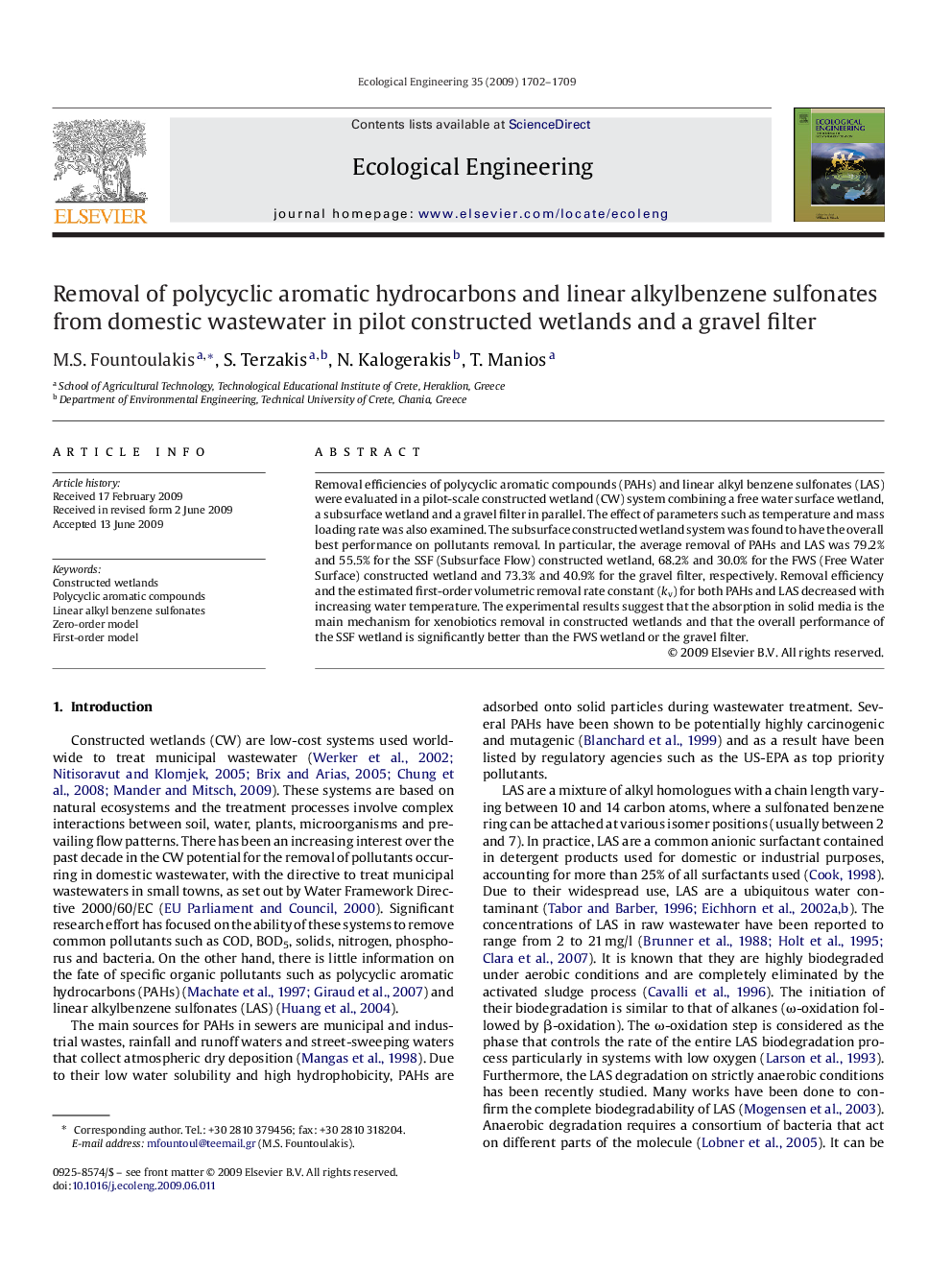| Article ID | Journal | Published Year | Pages | File Type |
|---|---|---|---|---|
| 4390410 | Ecological Engineering | 2009 | 8 Pages |
Removal efficiencies of polycyclic aromatic compounds (PAHs) and linear alkyl benzene sulfonates (LAS) were evaluated in a pilot-scale constructed wetland (CW) system combining a free water surface wetland, a subsurface wetland and a gravel filter in parallel. The effect of parameters such as temperature and mass loading rate was also examined. The subsurface constructed wetland system was found to have the overall best performance on pollutants removal. In particular, the average removal of PAHs and LAS was 79.2% and 55.5% for the SSF (Subsurface Flow) constructed wetland, 68.2% and 30.0% for the FWS (Free Water Surface) constructed wetland and 73.3% and 40.9% for the gravel filter, respectively. Removal efficiency and the estimated first-order volumetric removal rate constant (kv) for both PAHs and LAS decreased with increasing water temperature. The experimental results suggest that the absorption in solid media is the main mechanism for xenobiotics removal in constructed wetlands and that the overall performance of the SSF wetland is significantly better than the FWS wetland or the gravel filter.
